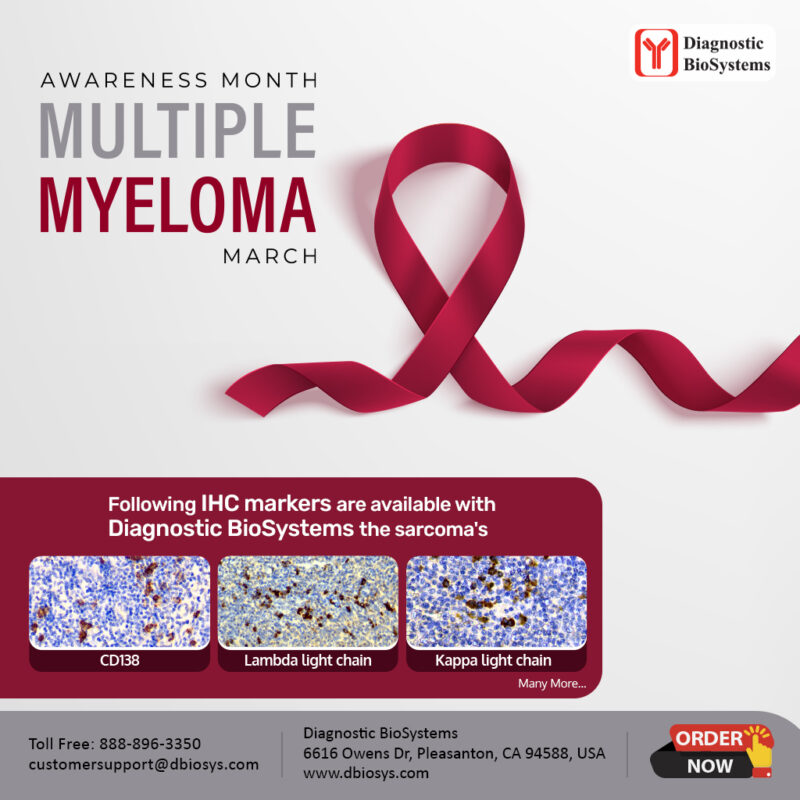CANCER AWARENESS
Multiple Myeloma Awareness Month!
Multiple myeloma is a type of cancer, bone marrow based, multifocal plasma cell neoplasm, usually associated with a monoclonal immunoglobulin (M protein) in serum and/or urine, and evidence of end organ damage related to the plasma cell neoplasm. The diagnosis of multiple myeloma requires synthesis of clinical, laboratory, radiologic and histologic and immunohistochemical findings.
Immunohistochemistry (IHC) markers play a crucial role in the diagnosis and characterization of plasma cell myeloma (multiple myeloma). They help identify and distinguish abnormal plasma cells within bone marrow biopsy samples. Several markers are commonly used in the evaluation of multiple myeloma:
- CD138: CD138 is a predominantly cell surface (membranous) marker but can be expressed in the cytoplasm or even in the nuclei, especially when overexpressed in the plasma cells, benign or malignant. It is a frequently used marker routinely to distinguish and quantitate plasma cells in hematolymphoid and non-hematolymphoid tissues and is a biomarker to help establish a diagnosis of multiple myeloma.
- Kappa/lambda light chain: The accurate determination of cytoplasmic immunoglobulin kappa and lambda light chain expression is very important in differentiating reactive plasmacytosis from a clonal plasma cell neoplasm such as plasma cell myeloma or multiple myeloma. The kappa/lambda ratio is usually defined as the ratio of the kappa-positive cell to the lambda-positive cell in plasma cells. CD138-positive plasma cell myeloma cells are routinely distinguishes from CD138-positive normal benign plasma cells by cut-off level between 0.35 and 5.5, with a sensitivity of 100% and a specificity of 98.0%.
- CD38: CD38 is another cell surface marker expressed by plasma cells, including those seen in multiple myeloma. It is often used in conjunction with CD138 for the identification of benign and malignant plasma cells.
- CD56 (NCAM): CD56 is a neural cell adhesion molecule that is expressed by some myeloma cells. It can be used as a marker for distinguishing myeloma cells from other types of cells in the bone marrow.
- CD19 and CD20: While CD19 and CD20 are typically associated with B-cell markers, their expression can sometimes be seen on myeloma cells. Their presence or absence may provide useful information regarding the prognosis and treatment.
In addition to aiding in diagnosis, IHC can also provide valuable information about the prognosis of multiple myeloma. Certain protein markers expressed by myeloma cells may be associated with disease aggressiveness and treatment response. Overall, IHC is a very important tool in the diagnosis and management of multiple myeloma. It provides valuable information that guides treatment decisions, predicts patient outcomes, and contributes to ongoing research efforts aimed at improving the understanding and treatment of this complex disease.




